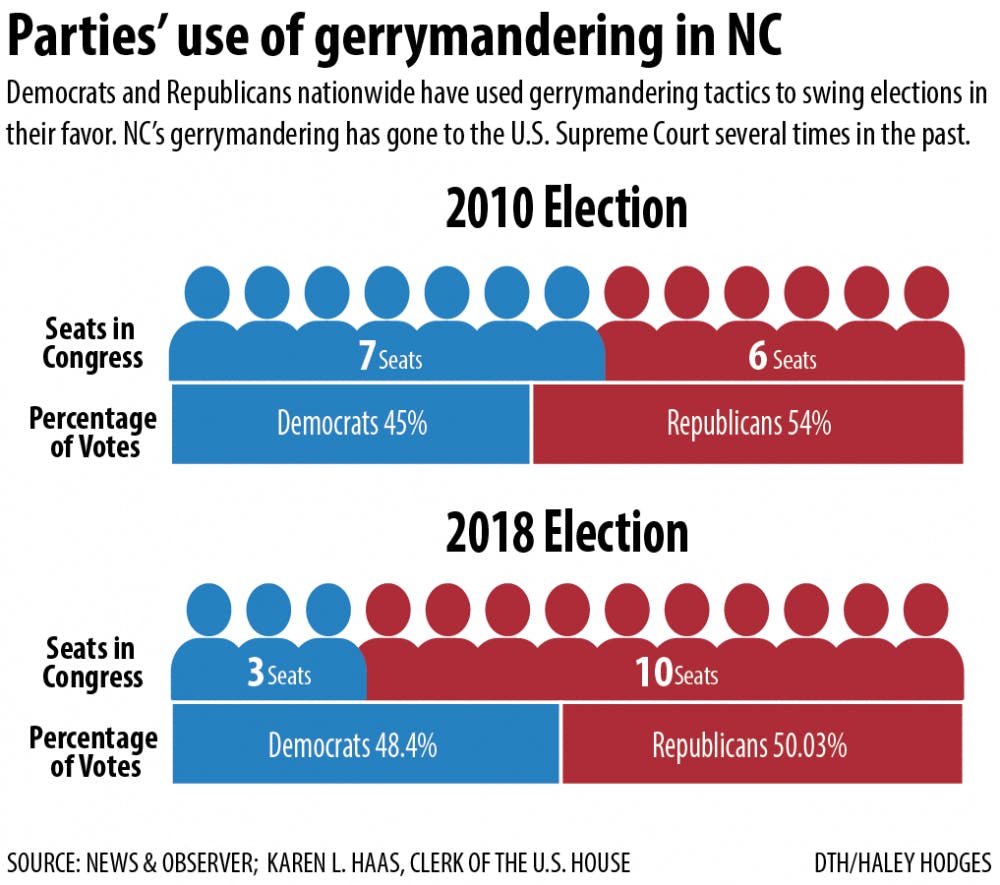After the U.S. Supreme Court ruled North Carolina's Congressional Districts were racially gerrymandered in February 2016, N.C. Rep. David Lewis, R-District 53, proposed a solution to his Republican colleagues: a partisan gerrymander.
“I propose that we draw the maps to give a partisan advantage to 10 Republicans and three Democrats because I do not believe it’s possible to draw a map with 11 Republicans and two Democrats,” Lewis, Joint Select Committee on Congressional Redistricting co-chairperson, said in a committee hearing.
In November 2016, Republicans won 10 of 13 Congressional seats, despite receiving only 53 percent of votes across the state. Two years later, Democrats across the country flipped 41 GOP seats. In North Carolina, Republicans’ total vote share slimmed to 50.3 percent.
The 10 Republican districts remained red.
Michael Bitzer, a professor of politics and history at Catawba College, said Democrats in the state legislature have also gerrymandered in the past, creating a 7-6 majority in the U.S. House.
“Before 2010, Democrats were pretty good at diffusing the districts to where Democrats would have at least a slight advantage or be competitive in a state that’s really more center-right than moderate,” Bitzer said.
Bitzer said Republican’s recent success has been a combination of Republican redistricting and predictable voting patterns.
“What happened (after 2010) was, Republicans were able to redraw the districts not just by packing Democrats into districts, but by also relying on voter loyalty across the state,” Bitzer said. “North Carolina voters, who are segregating themselves and putting themselves in like-minded communities, are very loyal voters that’ll vote down the ballot for one party.”
Partisan gerrymandering has been recently accelerated by developments in technology, specifically Geographic Information Systems, Bitzer said. GIS collects and analyzes data to create layers of information in maps.




